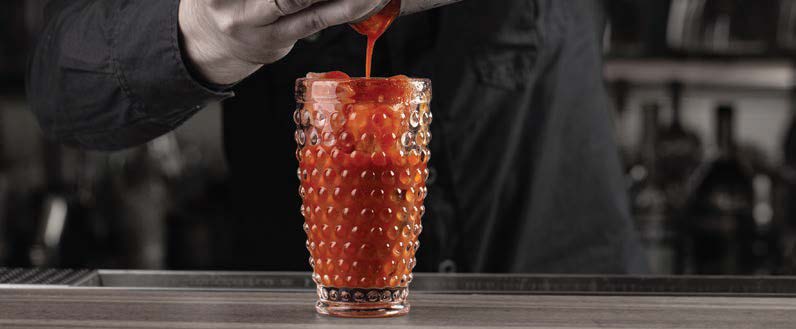HOME GROWN

Mama Macabre
My secret weapon
By Cynthia Adams
When I gave my mother a pillow needlepointed with “Drama Queen,” she cast me a look before promptly sticking it in a closet — where it remained.
Mama always had a penchant for drama, whether emblazoned on a pillow or not. Her Katherine Hepburn-like older sister was a stark contrast. Our cool-as-a-cucumber aunt made us invariably wonder even more: Why all the drama?
Was it the advent of high-drama television when Mama was young? However exciting 1940s-era radio programs (a staple of her youth) were, televised dramatizations enacted in real time were a leap forward.
From her mother, an otherwise no-nonsense lady who knew her way around any situation (from cooking and baking for a crowd to tilling the garden and growing her own veggies), Mama had inherited a curious thing: a passionate devotion for daytime soaps.
Their very names trembled with dramatic tension: The Edge of Night, Guiding Light, The Secret Storm — Mama and her mother, Mama Patty, eagerly followed each one.
Complete fiction, they both agreed. Outlandish storylines, they assented. They even recognized that the actors were just too perfect-looking. Even so, they were totally, passionately glued to the tube, Monday–Friday, from after lunchtime (then called “dinner”) to near suppertime (now called dinner.)
These detergent-sponsored dramas unfolded along a consistent trajectory — usually as follows: a. rags to riches, b. riches to rags, or c., the most convoluted, a fall, a rise, then a fall again.
Later in life, another passion usurped Mama’s attachment to soap operas. True crime reflected many of the same dramatic ingredients.
This fascination solidified during the O.J. Simpson trial.
My mother never lost interest, from June 17, 1994, the night of the televised white Bronco chase. She watched each development thereon, and knew each and every gory detail, from the infamous glove manufacturer (Aris) to alleged assignations with a lover, to the most obscure points.
Yet I had underestimated just how invested Mama had become.
So, when I took my mother to L.A. following bypass surgery, she had clear requests. First and foremost, she wanted to drive past the Beverly Hills homes of her favorite television and movie stars. Also, she wanted to visit the infamous Simpson site. That site.
She actually knew Nicole Brown Simpson’s Brentwood address.
With great misgivings, I drove Mama to Brentwood. She practically knew the way without aid of GPS.
When I slowed near the apartments briefly and sped on, Mama insisted I turn around and pass by again, but slower this time.
Gritting my teeth and gripping the steering wheel, I was deeply conflicted and yet did as she asked — she was a cardiac patient!
Mama’s disappointment was evident. Too many things (fences, trees, pedestrians) obstructed a clear view. What did she expect anyway? A historical marker? Plus, she complained, I was still driving far too fast.
Our reactions to the scene were radically different.
She expressed how shockingly modest the apartment complex was. I pointed out this was an actual crime scene, not a stage set.
Digesting how appalling it was that a horrific landmark was now a tourist destination, we returned to the hotel at my insistence. She didn’t appreciate the irony when I later booked us on a Grave Line Tour of celebrity homes. To Mama’s mortification, the guide pulled up before our hotel driving a gray hearse, no less. (The company’s website is priceless. Its tagline, “We put death on the map,” is truth in advertising. Now, you can stipulate if you prefer a “limousine ride through the City of Fallen Angels” over the hearse.)
But her interest in the dark side of the human psyche steadily intensified as she grew older. In the fall of 1994, when Susan Smith murdered her children in Union, S.C., Mama again absorbed every broadcast interview, each sordid detail.
Had she, I ventured jokingly, harbored a secret desire to drive me and some of her more vexing children into a lake? Of course not, she snapped.
Mama had a paralyzing fear of water and could not swim.
Otherwise, who could say? I wondered aloud. Mama didn’t laugh.
She even went with me to Union (along with hordes of other media folk) in pursuit of a story about the murder’s impact on a small town thrust into an intense media glare. Mama’s retention of minutiae actually proved helpful.
She quickly recalled the spot where Susan and her boss had occasionally met for drinks. There, a bartender talked on record, thanks to Mama, who innocently plied him with questions, murmuring sympathetically while nursing her favorite cocktail, a Bloody Mary. (Naturally.) He winced when I pulled out a notebook, yet Mama somehow put him at ease — a feat I couldn’t have managed alone.
It turned out the bartender was an old school friend of Susan’s. He shared details of her troubled adolescence and abuse, something he wouldn’t have done without Mama’s coaxing.
Till her end, Mama was helplessly hooked whenever a dark story broke.
Recently, I could not help but think of her as the Murdaugh murders and trials unfolded, horrifying and stupefying in their violent scope and retelling.
It’s a story that would have no doubt necessitated a return to South Carolina, Mama in tow, ready to ply a possible source.
Bloody Mary, indeed.
